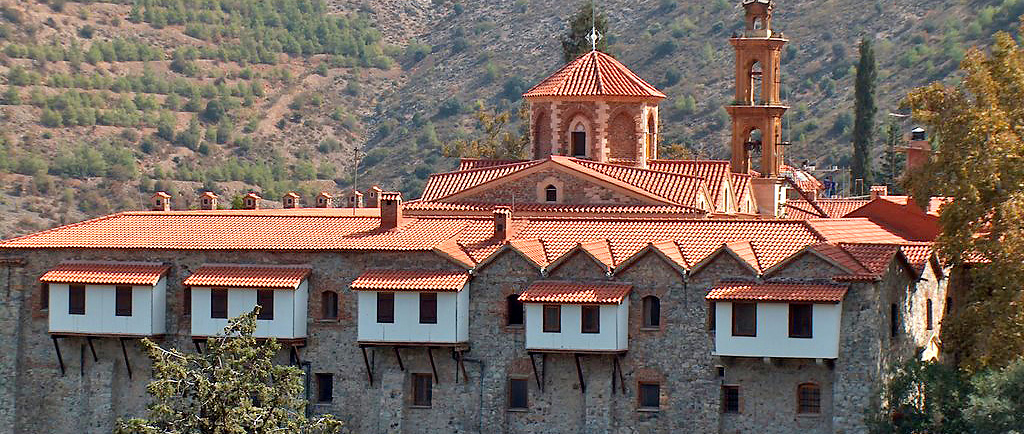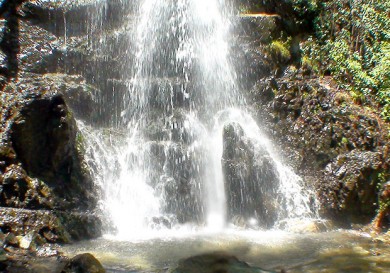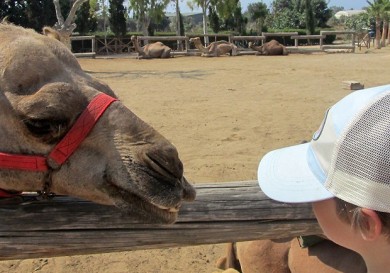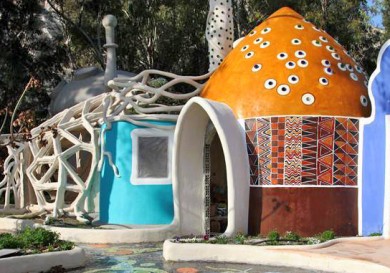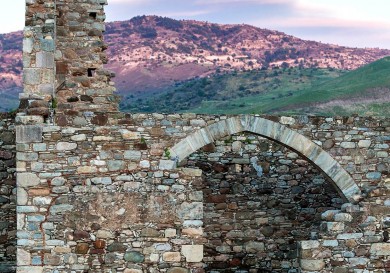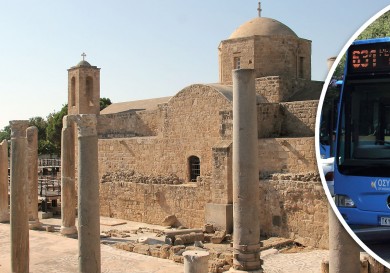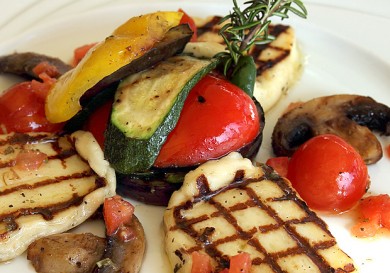Today we are leaving for a trip where we will get acquainted with the south-western part of Nicosia.
We leave the capital and head for the villages of Devtera and Kampia. After travelling for about 15-17 km we arrive at the village of Devtera.
The landscape of this part differs significantly from the mountain regions of Troodos near Limassol, which are so familiar to us. We move along, surrounded by open countryside, with the mountain ridges visible in the mist some distance away.
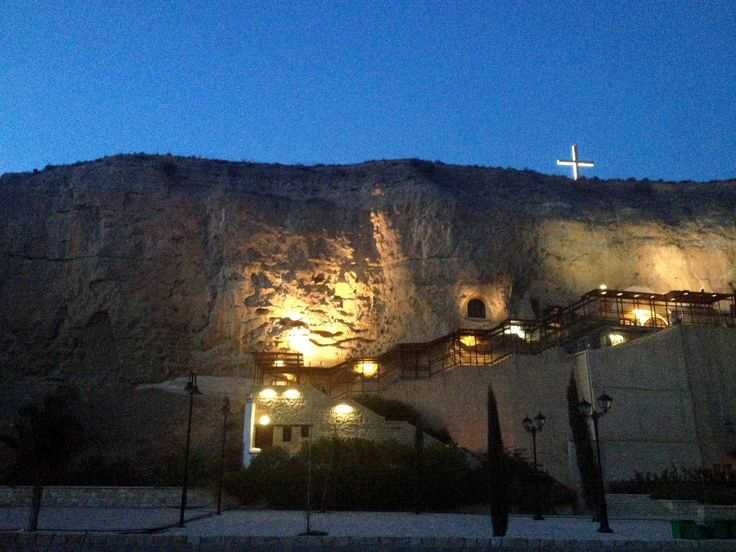 An Early Christian Church
An Early Christian Church
We make our first stop near the village of Deftera where there is a small cave church of Panagia Chrisospiliotisa.
This church resembles wonderful catacombs, and there are caves inside. This ancient church dates back to the early Christian era and was once decorated with incredibly beautiful frescos, but now the surviving fragments require significant restoration.
The traditional villages in the area also differ from the charming mountain villages of Troodos.
The houses here are mainly single storey and there are practically no tourists around, (you should note that most of the locals only speak Greek), whilst the range of goods and food in the local shops is quite limited, but prices in the local taverns are a little lower than in the well-known tourist areas.
Таmassos — one of Cyprus’ 12 kingdoms
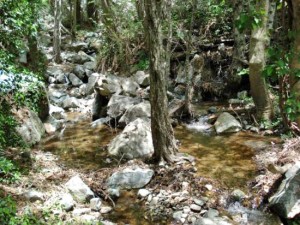 Our journey is taking us towards the ancient kingdom of Tamassos, whose territory spread to the settlement of Politiko.
Our journey is taking us towards the ancient kingdom of Tamassos, whose territory spread to the settlement of Politiko.
This ancient kingdom is one of the 12 known kingdoms in old Cyprus. The economy of the region was based on agriculture and copper mining.
Greek geographer and historian, Strabo, was the first to mention the copper mines of the region. The goddess of love, Aphrodite, and the god of arts, Apollo, were worshipped here as in many other parts of the island in ancient times.
Remains of the copper age up until the Roman period have been discovered during archeological digs in the vicinity of the settlement. The findings are a testament to the significant importance of the copper deposits for the kingdom’s economy.
Unfortunately there is little information about the role of the Kings of Tamassain in the history of Cyprus.
There are versions that in the 4th century B.C., the deposits were completely seized by the Phoenicians, whilst later Alexander the Great gave the Tamassa kingdom as a gift to Pnytagoras, the king of Salamis, as a reward for help in battle near the city of Tyre.
During the times of the Roman Empire, Tamassos was a significant administrative centre, which is proved by a circular Roman road running across the territory of the kingdom.
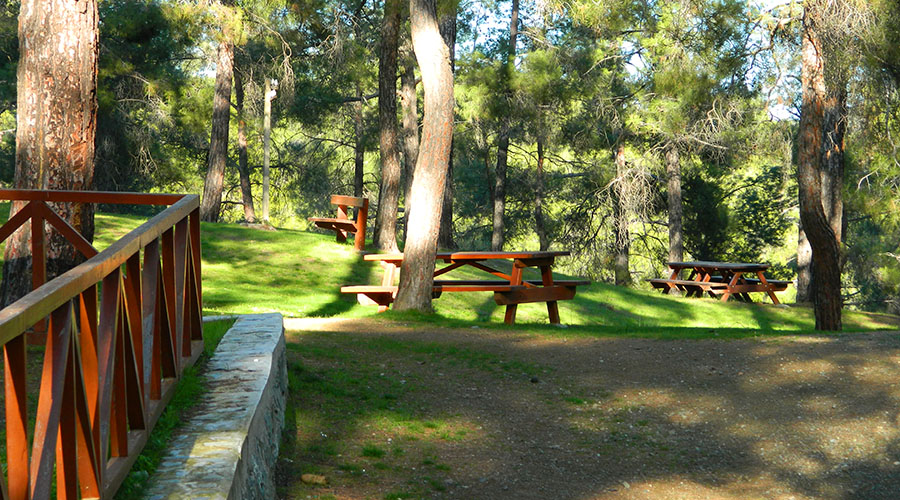 Two underground royal tombs were discovered in the area of an archeological park. They are quite well preserved, but it is unknown which royal family they belong to.
Two underground royal tombs were discovered in the area of an archeological park. They are quite well preserved, but it is unknown which royal family they belong to.
We are leaving the kingdom and heading for our main destination, the Macheras monastery, located high in the mountains.
The route runs through a pine forest and along a twisting mountain road.
By the way, there is the Machairas picnic area, one of the most popular picnic areas for the locals, on the road leading to the monastery. It’s quite crowded here on weekend and public holidays.
Machairas – a shelter for monks and Icons
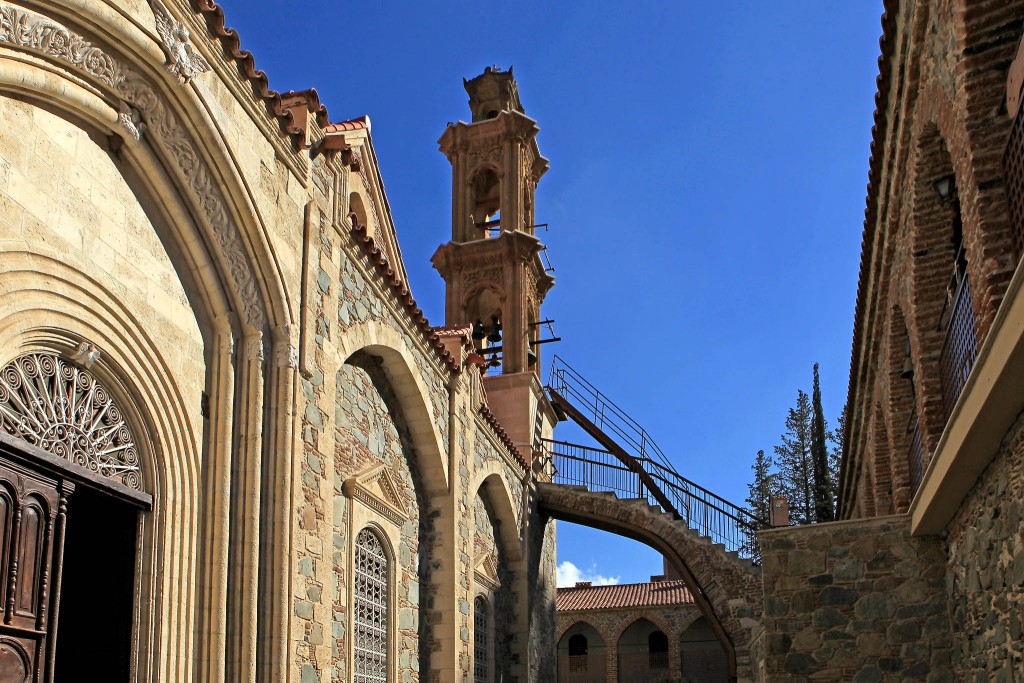 The Machairas Monastery is one of the oldest and most important in Cyprus.
The Machairas Monastery is one of the oldest and most important in Cyprus.
During the period of aniconism (730 – 843 B.C.), the Cypriot church did not reject the importance of icons. Many monks who fled from persecution found shelter on the island.
These people included the person who brought the icon of the Most Holy Mother of God. He spent his entire life struggling in severe ascetic conditions in one of the mountain caves the Machairas River, the icon next to him. After his death, the cave was abandoned because of Arab raids.
In 1145, two monks from Palestine, Neophytos and Ignatius, arrived on the island.
The monastery of Saint Chrysostom, located on the mountain ridge Pentadaktylos, became their shelter. Their attention was attracted by a light which seemed to come from the magnificent Troodos Mountains every evening. 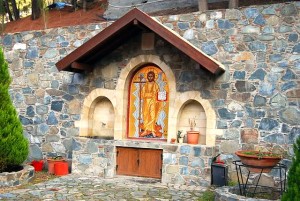 They approached the cave and heard a voice which ordered them to take a knife and clear the entrance. This is how the icon was discovered.
They approached the cave and heard a voice which ordered them to take a knife and clear the entrance. This is how the icon was discovered.
In 1160 two monks went to Constantinople to ask Emperor Manuel Kmnenos for help in the construction of a monastery of the Most Holy Mother of God, and received his consent.
During the Turkish rule, the monastery was an education centre for Cypriots. It was here where Archbishop Kiprian, executed by the Turks on 9th July 1821, served.
Every year, on the Assumption of the Mother of God (15th August), and on the 8th September, the monastery holds large scale fairs, where inhabitants from nearby villages and other regions come.
A tasty lunch in any taverna
To conclude our journey we are returning to the village. It’s about lunchtime now so we will have something to eat in one of the village tavernas.
Despite the small number of tourists, you will not be limited in your choice of restaurants. Of course, you will not find such a variety of cuisines and exotic dishes offered by the catering establishments in the large tourist areas, but you will find tavernas practically on every corner and, believe me, the variety of traditional dishes, the choice of aromatic, delicious homemade wine, and the low prices, will be a pleasant surprise.




